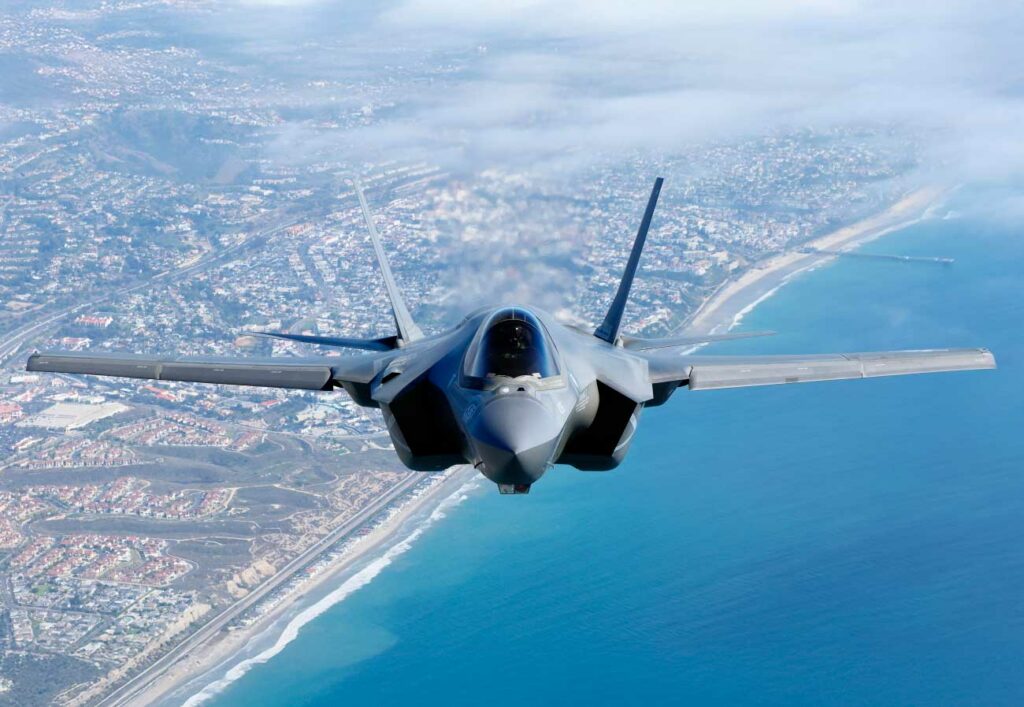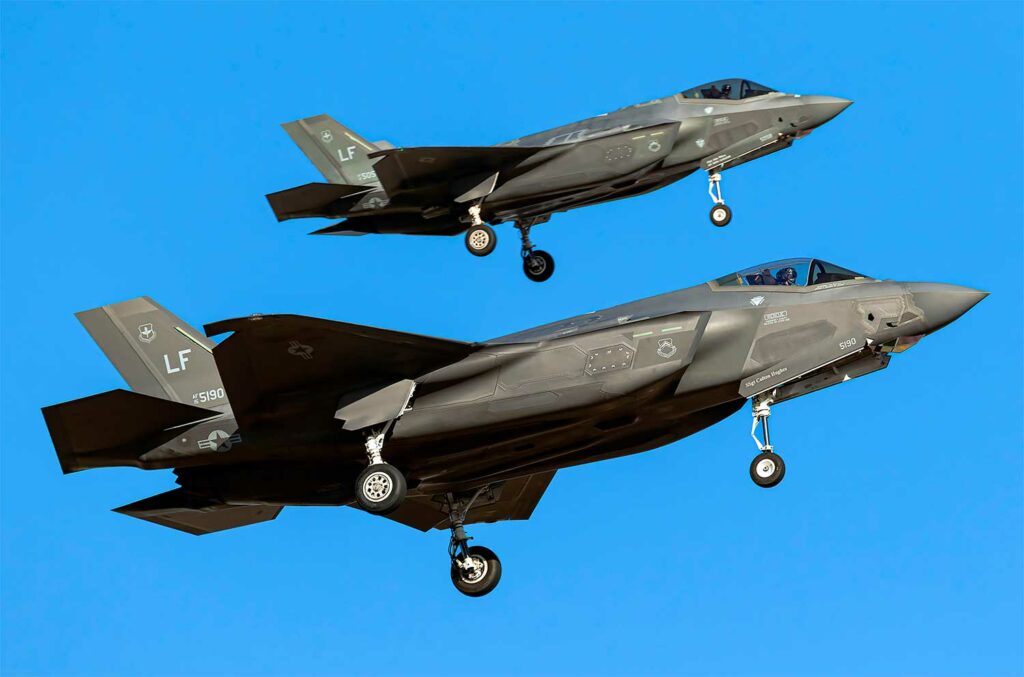
NATO, led by Mark Rutte, plans to purchase 700 F-35s from the United States to close its strategic air power gap.
Since the announcement by Secretary General Mark Rutte on June 9, 2025, NATO has been engaged in a massive acquisition program for 700 F-35 fighter jets from the United States. This investment aims to compensate for delays in the allies’ air power. Canada, in particular, is seeing its own F-35 program face significant delays and cost overruns estimated at between C$27.7 billion and C$33.2 billion for an order of 88 aircraft. The importance of this order stems from the alliance’s desire to strengthen its operational capabilities in a tense geopolitical context. Recent reports show that the unit cost of the F-35A is now between US$75 and $83 million (approximately €70–78 million). This decision is also part of a comprehensive plan to strengthen the alliance, including a 400% increase in air and missile defense capabilities. This article details the technical motivations, financial implications, industrial and structural challenges, and strategic consequences of such a commitment for NATO.

NATO’s acquisition program: motivations and figures
The announcement of the acquisition of 700 F-35s by NATO responds to a clear observation: the growing gap with the air capabilities of Russia and China. According to Secretary General Rutte, the alliance aims to strengthen its defenses by increasing defense spending to 3.5% of GDP, or even 5% if certain countries follow the US request. In budgetary terms, each F-35A costs around $75–80 million (approximately €70–78 million). For 700 aircraft, the total investment is between €52 and €56 billion, excluding armament, maintenance and infrastructure costs. This massive order will enable several countries – Germany (35), Canada (88), the Netherlands (52), Norway (52), Poland (32), Belgium (34), Finland (64), and Switzerland (36) – to standardize their fleets on the F-35. This harmonization strengthens tactical interoperability within the alliance, reduces long-term logistics costs, and improves coordination in joint missions. The economic model is based on economies of scale: by increasing production, the unit price falls through the US LRIP system. NATO’s overall order also sends a strong political message: the European alliance is strengthening its strategic dependence on the F-35 platform.
Challenges for the alliance: delays and cost overruns outside Europe
Canada’s experience illustrates the concrete challenges facing the F-35. The 88-aircraft program, initially estimated at CA$19 billion, now has revised costs of between CA$27.7 billion and CA$33.2 billion (+45%). Several factors explain this drastic delay: exchange rate increases, infrastructure construction delays, and complications due to the pandemic. The Auditor General’s report also highlights a lack of qualified pilots to train and operate the aircraft. At the NATO level, these risks are also present: delivery of the 700 aircraft would be spread over several years (2026–2035), requiring additional budgets for maintenance, parts, smart munitions, AESA radars, and simulators.
The delay in the delivery of infrastructure (hangars, reinforced runways, simulators) is therefore a particular concern. Each host site requires an investment of between €20 and €50 million, depending on the configuration. For ten bases, this adds €200 to €500 million. The ramp-up also raises the issue of ongoing training for technicians. The F-35 platforms require a team of around 150 to 200 specialists per squadron (maintenance, armament, IT, cybersecurity). By comparison, a fourth-generation aircraft requires around 100 specialists.
Industrial consequences and ramp-up plan for the alliance
This massive order for 700 F-35 fighter jets will have a significant industrial impact. The European market will benefit indirectly: from Lockheed Martin‘s factories in the United States, the F-35 supply chain relies on hundreds of suppliers, including several abroad, particularly in Europe (e.g., engines, software, components). The confirmation of such a large purchase secures the stability of the supply chain, limits disruptions and increases the volume of spare parts ordered.
From a technological perspective, NATO has approved the F-35A (conventional takeoff variant) as its reference platform. This paves the way for partnerships in flight testing, onboard artificial intelligence, and cyber defense. The standardization of fleets will enable tactical data fusion between countries: each aircraft will be able to collect and share data via the NATO network. Finally, the choice of the F-35 reinforces its position as a key pillar of the Airborne Battle Management System (ABMS), promoting the integration of AI and cooperative maneuvers.
Delivery is expected to take place between 2026 and 2035, in two phases: first an initial batch of 300 aircraft, followed by 400 over the following decade. This represents a permanent strengthening of air capabilities, but entails annual operating costs estimated at around 10% of the acquisition cost, or $5 to $6 billion per year for 20 years.

Geopolitical challenges and European defense
The acquisition of 700 F-35s is a strategic response to renewed tensions with Russia—considered a candidate for an attack on NATO within the next five years—and to the rise of Chinese military capabilities. On the ground, the F-35 offers a major capability advantage: stealth, AESA radar, air-to-ground weaponry, data collection, and air superiority projection. Distributed among allies, this fleet forms a decentralized structure capable of operating in cooperative squadrons. This strategy also secures Europe’s eastern flank by strengthening missions in Poland, the Baltic, and the Mediterranean.
Politically, this announcement confirms that Europe continues to subordinate part of its military effort to US industry. For some countries (e.g., Portugal), this choice is controversial and has led to proposals for national or European alternatives. Others, such as Poland and Norway, fully accept it. The challenge now lies in the ability of countries to finance and integrate the aircraft into their national systems. NATO is also counting on synergies between F-35 fleets and armed drones, long-range cruise missiles, and enhanced cyber capabilities.
Outlook: between standardization and strategic autonomy
In the medium term, the order for 700 F-35 fighter jets will enable NATO to rethink its air doctrines: standardization of tactics, pooling of maintenance resources, common logistics channels, and standardization of ammunition.
However, challenges remain:
- capacity: some countries will need to modernize their air bases;
- training of several thousand pilots and technicians;
- long-term financing of ownership costs – operation, parts, modernization;
- dependence on a single manufacturer: Lockheed Martin, and on the US government via Foreign Military Sales.
Despite this, the plan is a sign of strategic solidarity and uncompromising ambition in the face of complex air threats. However, the effectiveness of the plan will depend on its rigorous implementation, meeting technical and operational requirements without getting bogged down in ideological debates. NATO is taking a new tactical step: moving from national control to a collective approach, where the F-35 becomes the central vehicle for defense and interoperability.
War Wings Daily is an independant magazine.